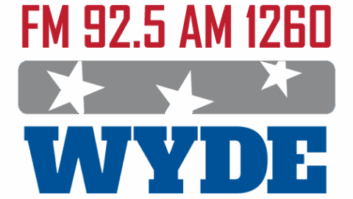Digital Radio Update – December 20, 2006
Dec 20, 2006 11:06 AM
Stay up to date on the latest IBOC news, business and technology information with the twice-monthly newsletter from Radio magazine.
Index:
- HD Radio Seeks Limelight at CES 2007
- BE Demos HD Radio for ITU
- U.S. Satellite Radio Penetration Slows in 4th Quarter
- Worldspace Supports new European Satellite Radio Standard
- Wi-fi Radio in the Wings
- IBOC by State: Minnesota
- An Introduction to the New Language Surrounding HD Radio
To receive these articles twice a month in your e-mail, subscribe to the Digital Radio Update – Insight to IBOC e-newsletter. Click here to subscribe.
NewsHD Radio Seeks Limelight at CES 2007
The 40th annual extravaganza of entertainment electronica, better known as the Consumer Electronics Show, will take center stage in just a couple of weeks. HD Radio will make its mark at the CES Las Vegas show venues with a variety of new products and demonstrations. Visit these events, displays and demonstrations if you are keeping an eye on digital radio:
CES Unveiled includes a look at HD Radio technology and takes place Saturday, Jan. 6 from 4 p.m. to 7 p.m. in the Marco Polo Ballroom in the Sands/The Venetian.
The Las Vegas Convention Center’s North Hall will host the majority of mobile electronics exhibitors, including HD Receiver vendors such as Alpine, Kenwood and JVC.
At the Ibiquity Digital/HD Radio booth, also located in the North Hall, visitors can sample next generation HD Radio features, in addition to existing products.
The Automotive Aftermarket Tech Zone is where retailers, distributors or manufacturers can learn more about the latest products in the automotive aftermarket industry, including HD Radio add-on converters.
An Industry Insider presentation will feature FCC Chairman Kevin Martin and Gary Shapiro, president of the CEA, in a one-on-one discussion of issues vital to the technology industry. This event is slated for noon to 1 p.m. Wednesday, Jan. 10 in the North Hall, Meeting Room N257.
Of course, other consumer electronics manufacturers with HD Radio products will also be on hand such as Boston Acoustics, Polk, Sangean and Sanyo. And many products scheduled for launch in 2007, from companies like Day Sequerra, Denon, Dice Electronics, Integra, Niles Audio, Radiosophy, Rotel and Visteon, will be on display in the Ibiquity/HD Radio booth.
The Consumer Electronic Show will run from Jan. 8 through Jan. 11 at the Las Vegas Convention Center. For more information go to www.ce.org.BusinessBE Demos HD Radio for ITU
Broadcast Electronics (BE) and Metro Radio, in cooperation with Ibiquity Digital, conducted a HD Radio demonstration for the ITU Telecom World 2006 conference in Hong Kong this week. The event marked the first organized presentation of HD Radio technology to the world’s spectrum managers.Carried over a low power FM signal operated on 100.1MHz by Metro Radio, a large commercial broadcast interest in Hong Kong, the demonstration was aimed at selling ITU conference-goers on the viability of HD Radio within various FM VHF allocations and band plans. Metro Radio said that the frequency assignment was specifically selected to demonstrate compatibility between HD Radio digital hybrid signals and adjacent channels.”With BE’s demonstration of the HD Radio system in Hong Kong, we’re optimistic that other Chinese provinces will consider HD Radio technology as a digital alternative,” said Perry Priestley, director international business development for Ibiquity Digital.Interest in HD Radio broadcasting by nations in the pacific rim centers on the system’s ability to piggyback digital broadcasts onto existing AM and FM frequencies without interrupting analog services currently available to listeners. Heightening that interest has been the number of HD Radio receiver models currently in production for the U.S. market, many of which are being manufactured in the region.U.S. Satellite Radio Penetration Slows in 4th Quarter
Consumers haven’t been knocking down the doors of their local retailers to put Sirius and XM recievers under the tree this Christmas, according to a recent story by the Associated Press. Bank of America Investment Analyst Jonathan Jacoby was quoted as warning investors that 4th quarter subscriptions for both satellite radio operators was down by about 20 percent in the last quarter of 2006, a slackening pace that could depress stock prices for the service providers.Jacoby also said that he believes that the U.S. satellite radio industry is in a “transition period” that will usher in a reliance on OEM auto receivers to further grow its listener base. But a reliance on auto showroom units packaged with a 90-day free service teaser isn’t a guarantee that buyers will become reguler subscribers, as XM is currently reporting a retention rate of only 52 percent.Based on current data, XM should finish 2006 with about seven million subscribers, while Sirius will finish with about six million; both well below projections just one year ago.Worldspace Supports new European Satellite Radio Standard
Worldspace Satellite Radio, a satellite digital radio service serving Africa and East Asia, has announced its support for the satellite digital radio (SDR) standard recently adopted in Europe. After a comprehensive review lasting nearly two years, the Satellite and Earth Stations and Systems (SES) technical Committee of the European Telecommunication Standards Institute (ETSI) approved the technical specifications of SDR. Combining terrestrial repeater networks and satellite platforms, the standard permits the most efficient use of the allocated spectrum, maximizing digital capacity while maintaining service quality, even in difficult reception environments such as urban centers.Worldspace Europe contributed technological proposals to the SDR working group from the beginning of the ETSI process. “With the SDR standardization, a significant step for satellite radio in Europe has been achieved,” said Noah Samara, Worldspace CEO. “As a leader in the global satellite market, we not only recognized the importance of SDR technology but also understood the positive impact it would have on the industry as a whole.”Eye on IBOCWi-fi Radio in the Wings
While subscription-based satellite radio continues to dominate popular press buzz on the future of the radio medium, its growth has been stealthily eclipsed by another streamed-audio medium–Internet radio. Thus far, it has been a quiet revolution.Even though research organizations like Bridge Media show that consumer sampling of Internet radio has grown at a rate greater than that of satellite or HD Radio, the fact that consumers now have literally thousands of free, non-subscription radio services to choose from has largely been ignored by mainstream media, based on the assumption that Internet radio is accessible only to geeks tethered to their home PCs; hardly competition for inexpensive, mobile and easy to use broadcast and satellite radios.But that might be about to change. According to a recent article by Matthew Ingram in the Toronto Globe and Mail’s Update online publication, a new family of small, wireless Internet appliances designed specifically for surfing Internet radio are now making their way to market.Although the concept of dedicated Web radios has been around for a while, their track record in terms of sales has been nothing short of miserable. Upstarts such as the Kerbango and Roku met with brief fanfare, but generated few sales receipts. In part, their failure to catch on can be traced directly to platform characteristics, rather than available content. First of all, early Web radios were expensive, typically in the $200 to $300 price range. Secondly, they were bulky and anything but portable, requiring external ac power supplies and Ethernet or external wireless adapters for Web access. Designers of these Web appliances tried to mitigate those key drawbacks by adding FM modulators that would allow conventional radios to be used as remote receivers, but with some obvious limitations, not the least of which was that the entire affair remained housebound.Now, however, Web radio platforms appear to be evolving into something far more familiar and practical. One example, the In Fusion by Torian, resembles a garden -variety MP3 player or satellite radio receiver. It features built-in Wi-fi Internet radio connectivity, the ability to record music onto removable flash cards, and includes conventional FM tuner and MP3 player functionality It’s powered by a rechargeable battery. The cigarette pack-size device, already shipping at about $280 retail, is admittedly a “high end” product. But the real story is that Torian, an Australian technology group, is offering the In Fusion’s R-06 Internet radio module–selected by CES as a 2007 Design and Engineering Award winner–as an OEM component to other manufacturers for integration in new and existing product lines.Torian is not alone. British-based Cambridge Consultants plans to demonstrate their prototype for a Wi-fi radio module at the Consumer Electronics Show in a couple of weeks. Dubbed Iona, the device represents a low-ball approach that might be produced for as little as $15 (U.S.). It could be combined with any number of platforms, including 3G cell phones with networked broadband access.What this means, of course, is that Wi-fi radio is poised to be widely available on belt clips and dashboards sooner rather than later.Factor in the appearance of proposed Wi-max networks, some of which are rolling out as this is story being written, and it’s not hard to see where radio may be heading. And while it’s a great time for those who love the idea of unlimited choice in radio programming, it’s just one more shot across the bow for the traditional broadcast model across America.IBOC Across AmericaIBOC by State: Minnesota
Ibiquity has a list of stations that have licensed HD Radio technology. IBOC by state will look at various states and list the stations that are making the transition.MarketFreq.CallsHD1 FormatHD2 FormatHD3 FormatLicensee Austin90.1KNSE-FMNews/Info–Minnesota Public Radio Fargo-Moorhead, ND-MN90.3KCCD-FMNews/Talk/Info–Minnesota Public Radio Fargo-Moorhead, ND-MN91.1KCCM-FMClassical–Minnesota Public Radio Minneapolis-St. Paul91.1KNOW-FMNews/Talk/Info–Minnesota Public Radio Minneapolis-St. Paul92.5KQRS-FMClsc RockBlues-ABC Radio Minneapolis-St. Paul93.7KXXR-FMRockComedy-ABC Radio Minneapolis-St. Paul97.1KTCZ-FMAAAAcoustic AOR-Clear Channel Radio Minneapolis-St. Paul99.5KSJN-FMClassicalJazzKNOW-News/TalkMinnesota Public Radio Minneapolis-St. Paul100.3KTLK-FMNews/TalkClassic CountryKFAN-AMClear Channel Radio Minneapolis-St. Paul101.3KDWB-FMCHRDance-Clear Channel Radio Minneapolis-St. Paul102.1KEEY-FMCountryNew Country-Clear Channel Radio Minneapolis-St. Paul102.9WLTE-FMChristmasNews-WCCO-CBS Radio Minneapolis-St. Paul104.1KZJK-FMJackSmooth Jazz-CBS Radio Minneapolis-St. Paul107.9KQQL-FMOldies80’s-Clear Channel Radio Minneapolis-St. Paul830WCCO-AMNews/Talk/Sports–CBS Radio Minneapolis-St. Paul1130KFAN-AMSports/Talk–Clear Channel Radio Rochester90.7KZSE-FMNews/Talk/Info–Minnesota Public Radio Rochester91.7KLSE-FMClassical–Minnesota Public Radio St. Cloud88.9KNSR-FMNews/Talk/InfoClassicalTBDMinnesota Public Radio St. Cloud90.1KSJR-FMClassical–Minnesota Public RadioHD Radio TerminologyAn introduction to the new language surrounding HD Radio.
space combining: An FM IBOC transmission system that uses co-located but separate antenna elements to transmit the outputs of discrete analog and digital transmitters.interleaved antennas: An antenna array designed for space combining of IBOC FM analog and digital signals. Theoretically, identical style antenna elements are mounted on a common axis in staggered order. Digital and analog elements are cross-polarized to reduce mutual coupling.







